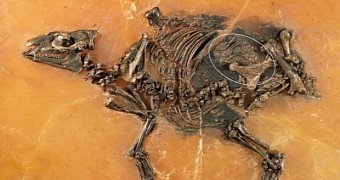It was about a year ago that researchers announced the discovery of the remains of an ancient horse-like creature at the Messel pit site near Frankfurt, Germany.
Well, actually, the skeleton was discovered during a dig back in 2000. However, it was only a few years later that scientists got around to studying the bones and discovered that they were actually looking at the remains of a mare and its unborn foal.
Then, earlier this week, a team led by scientists at the Senckenberg Research Institute in Germany and the Naturhistorisches Museum Basel in Switzerland published a study detailing the find.
The remains are 48 million years old
When they first announced the discovery late last year, the research team estimated the bones to be about 47 million years old. Now that they've properly examined them, however, they say they date back to 48 million years ago.
As mentioned, the remains belong to a mare and its unborn foal. Apparently, the animal died close to when it was supposed to deliver. The fetus, whose skeleton is still nestled in its mother's womb, measures about 12.5 centimeters (nearly 5 inches) in length.
Although 48 million years old, the fetus skeleton is surprisingly well preserved. Nearly all its bones are in their proper place and connected. The only thing that's missing is its skull, which researchers say appears to have been crushed.
In their paper in the science journal PLOS ONE, the specialists behind this investigation say the remains also produced samples of preserved soft tissue, an impressive feat considering they've been around for ages.
“The authors also found preserved soft tissue, like the uteroplacenta and one broad uterine ligament, which may represent the earliest fossil record of the uterine system of a placental mammal,” Science Daily informs.
It's unclear how the mare and its foal died
Since death occurred when the fetus was fully formed, it might be that the mare and its offspring died due to complications during delivery. Then again, seeing how their skeletons were found close to a volcano, it might also be that what killed them was poisonous gas.
They died on the bank of a freshwater lake, and over time, their remains were swallowed by sediments. Millennia later, these sediments turned their bones into fossils.

 14 DAY TRIAL //
14 DAY TRIAL //